
Anesthesia
Multiple agents have been utilized to provide anesthesia in fish. Koi ar not considered food fish but for food fish only tricaine methanesulfonate has gone through the process to receive approval as new animal drugs in fish.Tricaine methanesulfonate
There is only one officially approved agent for use in food fish, Tricaine methanesulfonate (MS-222) which is sold by two manufacturers under the trade names of Tricaine-S® and Finquel®. The manufacturers suggested starting dosage and directions are included with the drug. In solution, Tricaine methanesulfonate is very acidic and can burn the gills if left unbuffered. It is sold as a powder which readily mixes with water. For our water conditions, two parts sodium bicarbonate are added to the water for each part of this anesthetic. It may be prudent to check the pH of the water after addition of MS-222. to ascertain adequate buffering has been achieved. There is a 21 day withdrawal time for food fish for MS-222.
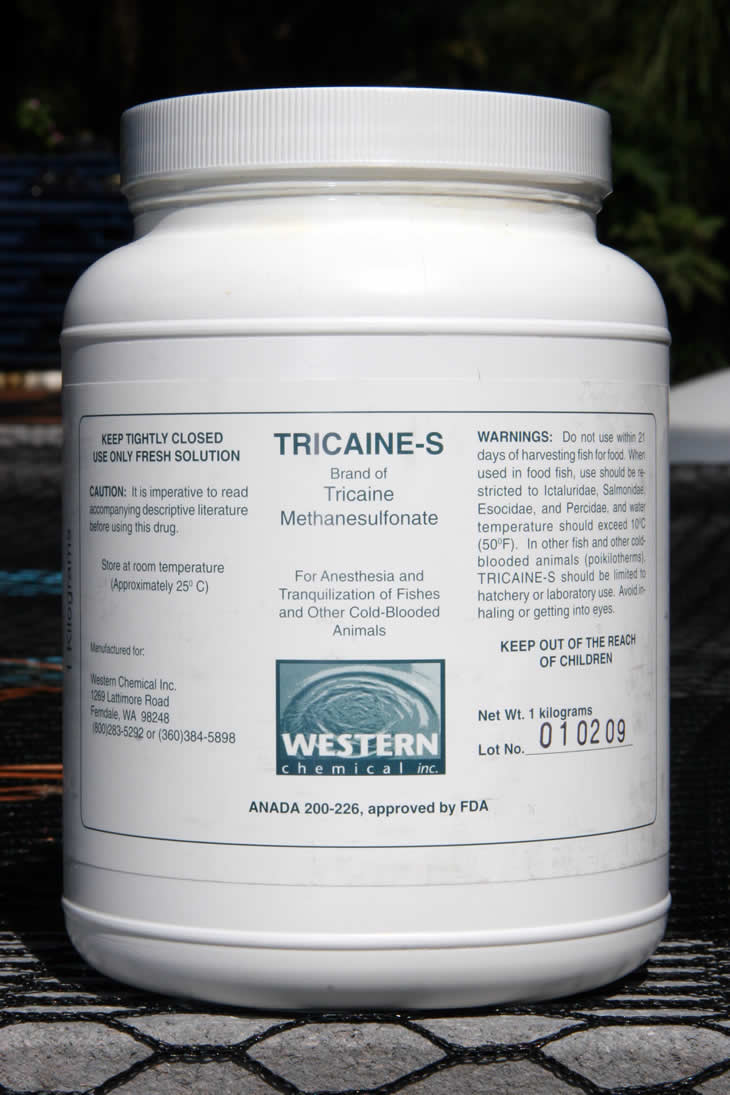
Isoflurane...
Isoflurane may be dissolved in water by injecting the solution through a fine gauge needle underwater and mixing. Isoflurane is utilized for human anesthesia in a vaporized form. It is very safe and has been utilized for extensive surgical procedures in koi. It is a controlled substance and expensive. While safe and effective, more economical alternatives are available to immobilize koi for venipuncture.
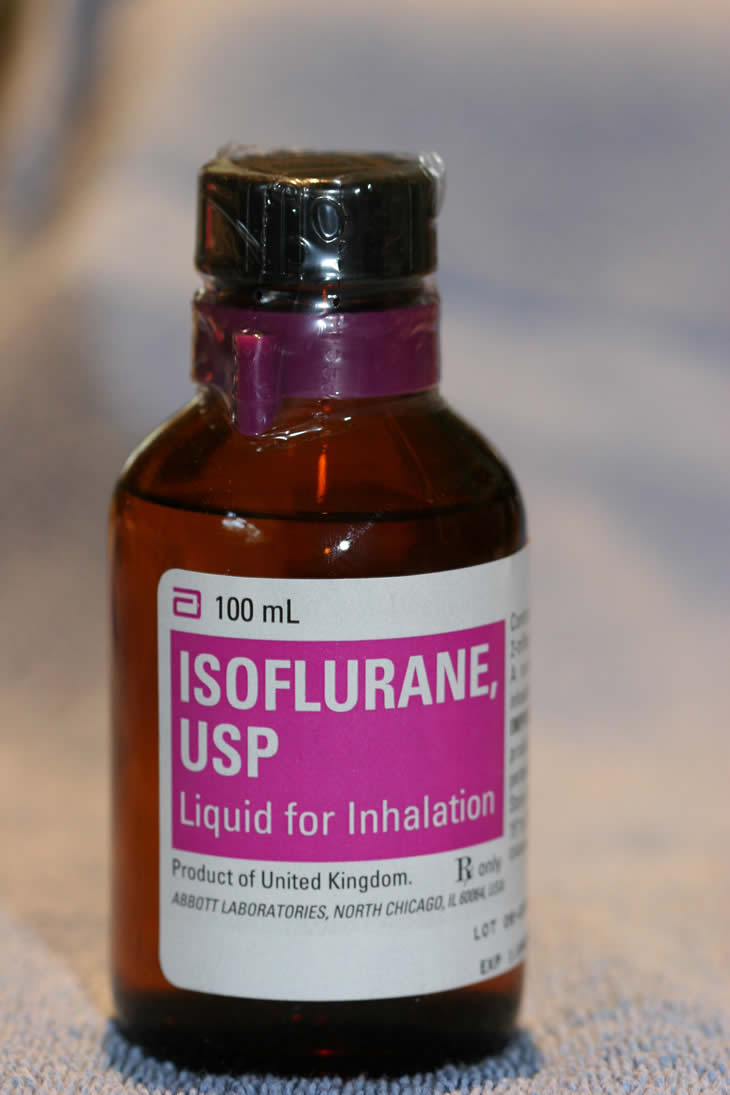
Clove oil and its derivatives...
Clove oil, as commonly sold, varies from lot to lot in the strength and composition of its components. The major active ingredients are 85-95% eugenol with the balance isoeugenol and methyleugenol There is some debate as to how good of an anesthetic agent it is. It has been widely utilized for years. It is inexpensive and readily available without a prescription. A starting dose might be 0.5 ml per gallon of water.
As clove oil does not mix readily with water, steps must be taken to ensure the oil is evenly mixed with the water in the anesthesia water. Some put a measured amount of clove oil in a vinyl bag, add water and shake vigorously. This is then mixed with the rest of the water in the anesthesia tub. Another approach is to mix the clove oil with ethanol then add it to the water in the anesthesia container. Perhaps the simplest and easiest method is to use a small jar with a screw top. Tap or hose water is used to fill the jar approximately half full. A measured amount of clove oil is added to the jar (using a syringe without the needle), the lid is tightened, and the jar is vigorously shaken. The resultant emulsion is added to the water in the anesthesia container. If tap water is used to emulsify the clove oil in the jar, the interior of the jar does not have to be disinfected between groups of fish being tested.
Clove oil is not approved for use in fish for human consumption.
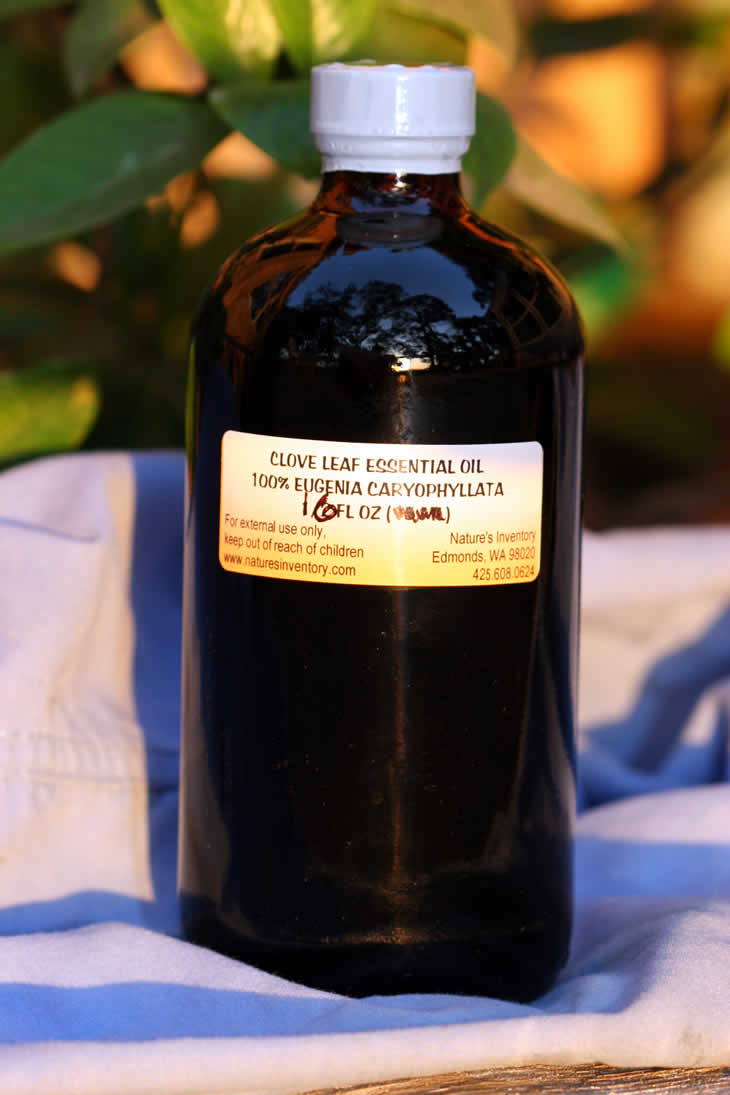
Induction of anesthesia...
Regardless of the anesthetic agent utilized, the fish should be fasted the day before induction. Containers containing the anesthetic agent of choice should be aerated. Traditional koi bowels, Rectangular measuring tubs, and various Rubbermaid type containers have been commonly utilized.
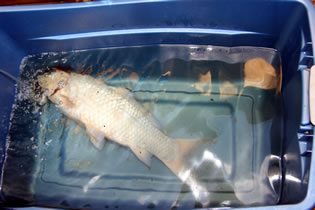 |
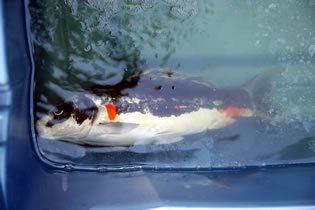 |
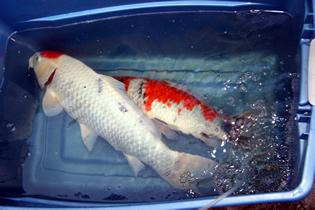 |
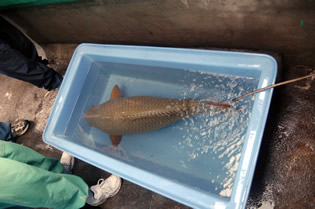 |
Regardless of the anesthetic agent utilized, the koi should be carefully monitored which in anesthetic solution. Initially many koi will undergo a phase of hyper excitation with very rapid gill movement. As the anesthetic agent takes effect, gill retractions will slow and many koi will roll on their side. Only when the koi is adequately relaxed should venipuncture be done. A moving tail can easily bend a 22 gauge needle.
In the event the fish appears over sedated and gill retractions become to slow, it is helpful to have another container of aerated pond water available. The sedated koi can be partially recovered in this container.
Big fish usually take much longer than smaller fish to achieve adequate anesthesia for venipuncture. Once experience in blood drawing, it frequently is efficient to anesthetize several fish at a time, especially when two or more are drawing blood.
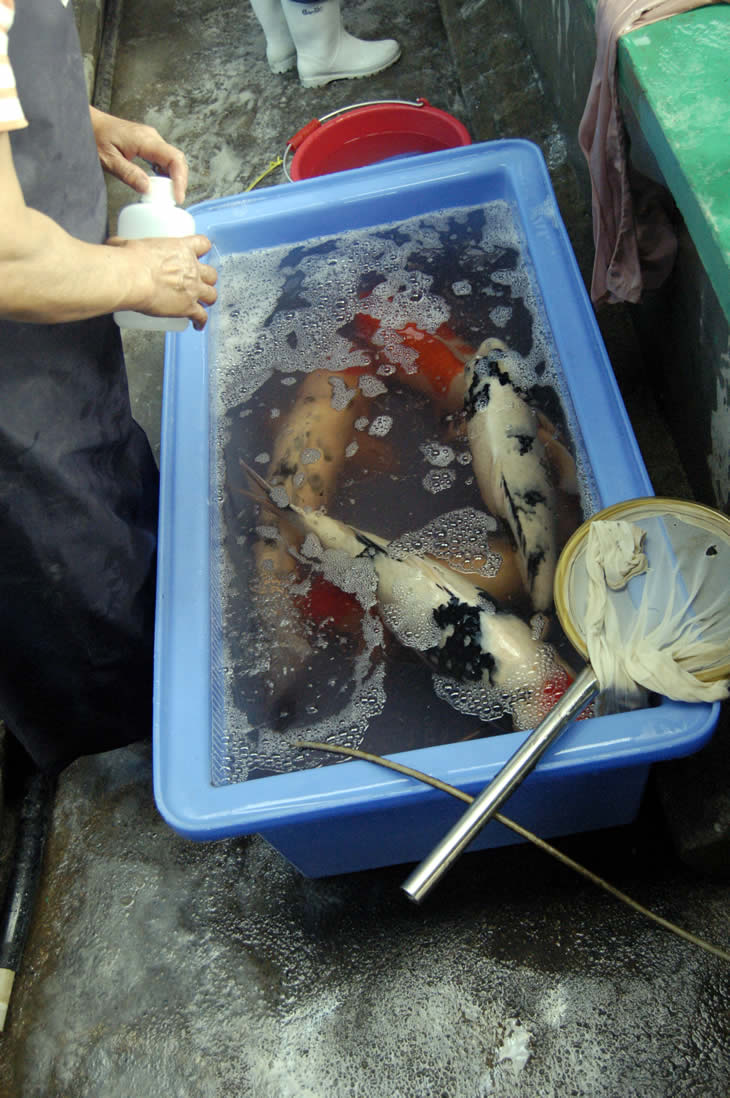
After an adequate level of anesthesia has been induced, the fish is carefully supported and transferred to a container containing aerated water for the drawing of the blood sample.